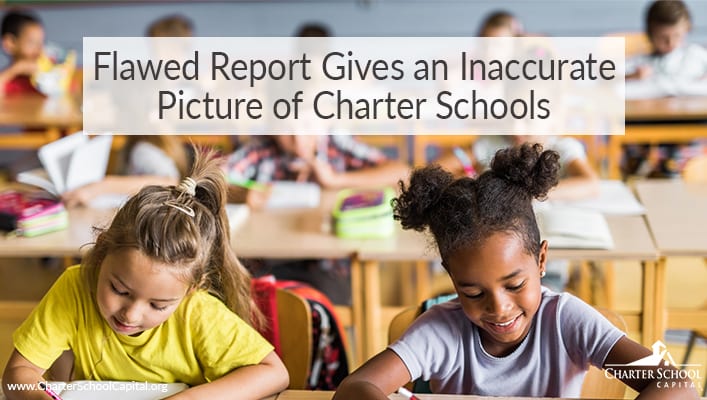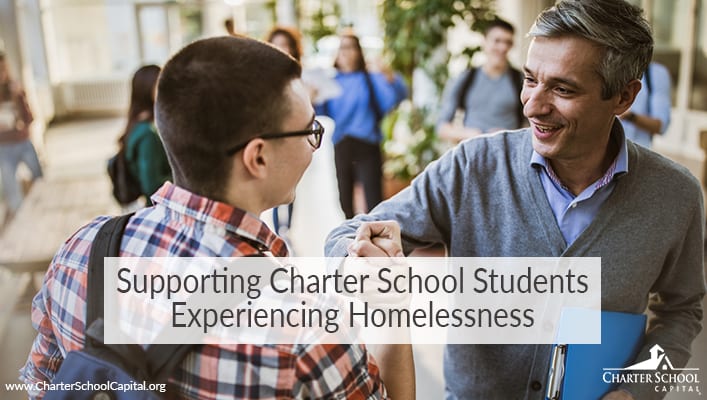Flawed Report Gives an Inaccurate Picture of Charter Schools
Editor’s Note: This analysis was published by the National Alliance for Public Charter Schools on December 11, 2019. The analysis released by NAPCS addresses Still Asleep at the Wheel, a publication released by the anti-charter school group, the Network for Public Education (NPE):
We think it’s vital to keep tabs on the pulse of all things related to charter schools, including informational resources, and how to support school choice, charter school growth, and the advancement of the charter school movement as a whole. We hope you find this—and any other article we curate—both interesting and valuable.
Bad Data and False Assumptions in Still Asleep at the Wheel
Today, Nina Rees, president and CEO of the National Alliance for Public Charter Schools, published the following statement regarding Still Asleep at the Wheel, a publication released by the anti-charter school group, the Network for Public Education (NPE):
“Charter schools have been, and are, a lifeline to millions of students—many of them poor, black, and brown. And the federal Charter Schools Program (CSP) has provided vital seed funding for charter schools, allowing new schools to open and high-performing charter schools to replicate and expand in communities where there is a desperate need for high-quality public school options.
“The CSP, like every federal program, should be subject to careful oversight and thoughtful review—in order to safeguard taxpayer investments and the education of students. Unfortunately, the NPE ‘report’ is neither thoughtful nor careful. Instead, it is a reckless attack on an indispensable program, substituting half-truths, falsehoods, and unsubstantiated assertions for careful analysis.
“According to the U.S. Department of Education’s own analysis of 5,264 charter schools that have received state or direct Department funding, only 1.7 percent of CSP-funded charter schools close before their second year of operation. The Department’s analysis also found that the start-up success rate of charter schools that received CSP funding has improved as greater oversight has been implemented. Moreover, this report does not include data from grants awarded since the passage of the Every Student Succeeds Act, which greatly strengthened the CSP program. Since 2001, more than 96 percent of all CSP funds resulted in the opening of a charter school.
“The report also frames every closure—regardless of when or why it occurs—as a sign of waste. To the contrary, school closures indicate state charter school laws are working and authorizers are doing their job—closing schools that aren’t meeting their accountability agreements. This feature distinguishes charter schools from district-run schools, which can continue to remain open and spend taxpayer dollars even when they fail to provide a quality education for students. Furthermore, our review of publicly available data finds that, on average, four percent of charter schools close each year—nowhere near the picture this report attempts to paint.
“NPE incorrectly assumes that when a multi-year CSP grant award is made, funding is provided in its entirety up front. This is not true. Schools that never open receive only a fraction of the award amount—typically only utilizing ‘planning’ funds. Thus, if a school never opens it can’t receive its full CSP award. The NPE analysis dramatically overstates the amount of funding allocated to schools that never opened. This is just one example of the multiple problems with the report.
“The false claims contained in the report are unfortunately not surprising. NPE, its board, and its funders have long been more concerned with stopping the progress toward more high-quality public school options than ensuring that every child—regardless of zip code—has access to a high-quality education.
“NPE is a biased organization that is funded by the teachers’ unions, which are notoriously hostile to giving parents and students more choices in public education. In 2018, the American Federation of Teachers reported contributing $35,000 to the Network for Public Education Action. Between 2014 and 2016, the Chicago Teachers Union Foundation gave more than $300,000 to the Network for Public Education. This report is another attempt to put a veneer of data and research on a political effort to deny students public school choices. We would urge all readers to consider the source before embracing the finding.
“We at the National Alliance want the CSP to work well, especially for the estimated 5 million students who would attend a charter school if one were available to them. We are eager to promote an honest and fact-based evaluation of the program’s strengths as well as areas in which improvement is needed. Unfortunately, the NPE report has no place in such an assessment and instead spreads smoke where light is needed.”
For more information on why Still Asleep at the Wheel is filled with bad data and false assumptions, see our full analysis.
 Since the company’s inception in 2007, Charter School Capital has been committed to the success of charter schools. We help schools access, leverage, and sustain the resources charter schools need to thrive, allowing them to focus on what matters most – educating students. Our depth of experience working with charter school leaders and our knowledge of how to address charter school financial and operational needs have allowed us to provide over $2 billion in support of 600 charter schools that have educated over 1,027,000 students across the country. For more information on how we can support your charter school, contact us. We’d love to work with you!
Since the company’s inception in 2007, Charter School Capital has been committed to the success of charter schools. We help schools access, leverage, and sustain the resources charter schools need to thrive, allowing them to focus on what matters most – educating students. Our depth of experience working with charter school leaders and our knowledge of how to address charter school financial and operational needs have allowed us to provide over $2 billion in support of 600 charter schools that have educated over 1,027,000 students across the country. For more information on how we can support your charter school, contact us. We’d love to work with you!


